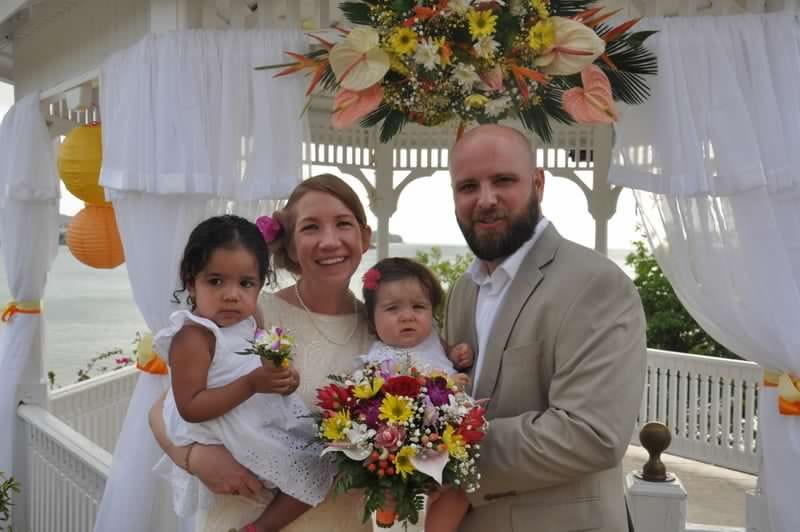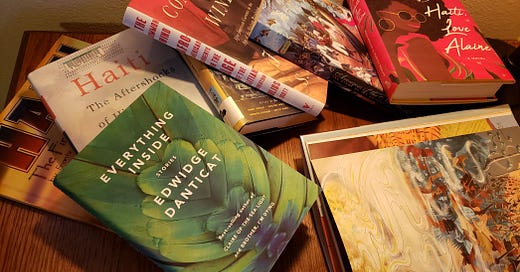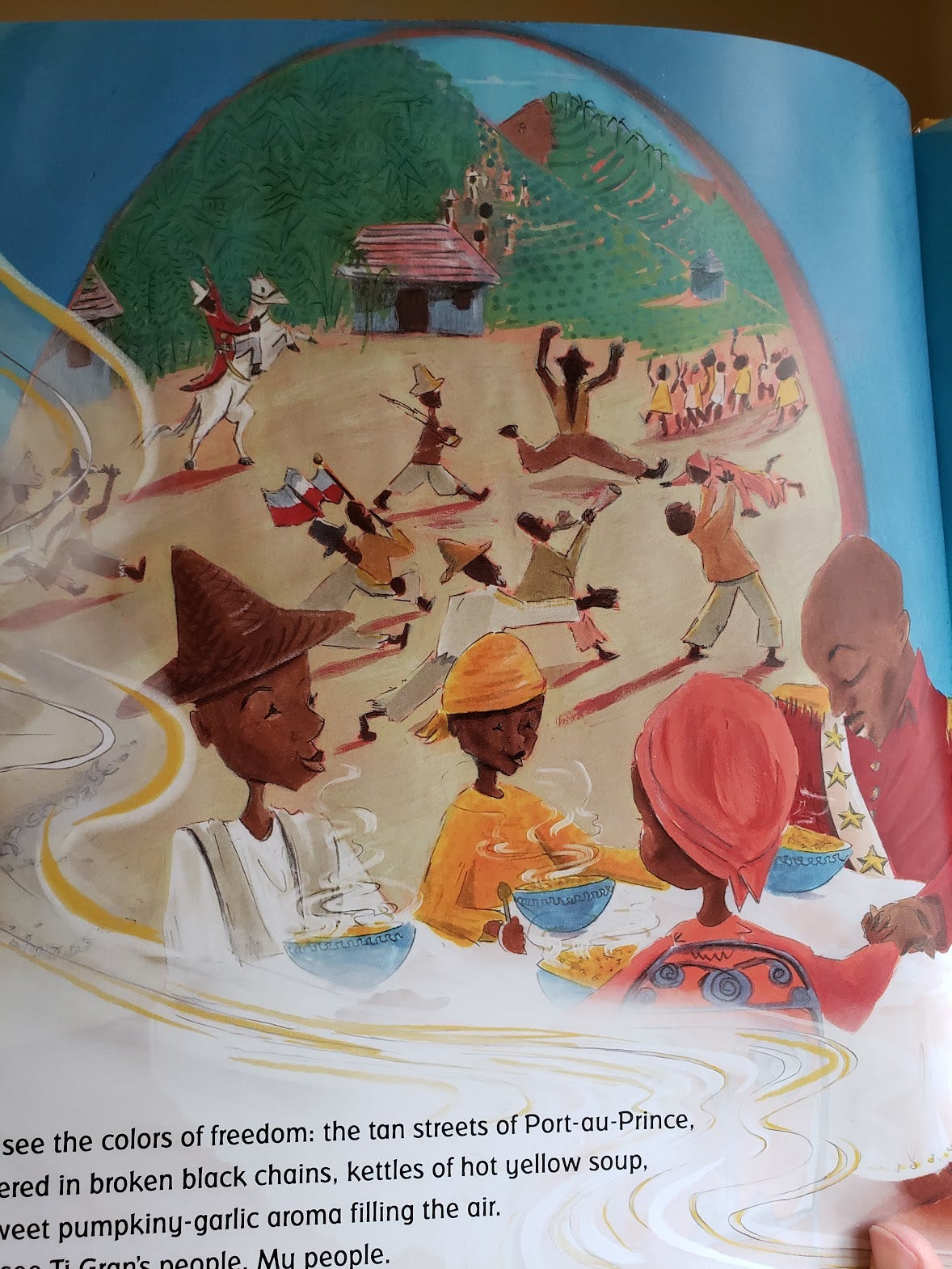Haiti Part I: Freedom Soup, The Haitian Revolution, and West Las Vegas
The next few weeks will bring you a trio of Substacks on teaching the Haitian Revolution. This is Part 1.
A book to read: FREEDOM SOUP by Tami Charles, illustrated by Jacqueline Alcántara
Reading a picture book to a group of high school students might sound weird, but it always works beautifully. I tell them to put their pencils down and get comfy. We all lament the lack of a classroom rug. I read, walking around the classroom1 to show the pictures. They love it.
Okay, I won’t lie. One or two students usually fall asleep. But most of them love it.
Last week, I read FREEDOM SOUP to my 10th graders to kick off our Haitian Revolution unit. The book, meant for 5-year-olds, is a vibrantly illustrated story of young Belle and her Haitian grandmother. It’s Haitian Independence Day, (which is also New Year’s Day) and Belle is making Freedom Soup with Ti Gran. The story is mostly about love and spices and the delicious smell of pumpkin. But in between the cooking and the party, Belle learns about the Haitian Revolution.
It’s the barest introduction to the subject. My daughters were 5 or 6 when the book came out and I remember reading it to them. It’s a good way to start talking about slavery with the youngest of learners. Readers simply learn that people were enslaved in Haiti, and it was unfair. Then, readers turn the page and learn that the enslaved people fought for their freedom. Revolution! Freedom Soup for Everyone!
If you also want to read about the soup here on Substack, check out Raising Myles by Marc Typo. Marc made a video about the soup and a bit about Haiti that’s fun to watch. His newsletter is full of heartwarming letters to his infant son.
A place to explore: West Las Vegas
I’ve never been to Haiti. The closest I got was the week I spent in Saint Lucia. However, I was at an all-inclusive resort getting married, which doesn’t connect to the Haitian Revolution vibe I’m going for here.

I’m beginning to realize that the problem with this newsletter is that I often read books set in Haiti and Ghana and Singapore and Australia and Iran, but I’ve never been to those places. I’m not about to limit my book recommendations to places I’ve traveled (lest I end up more ethnocentric than my student’s textbook), so I have to get creative here.
Hence, West Las Vegas
In the 1920s, a few Black-owned clubs popped up in the area due to the discrimination that segregated the clubs and casinos. In the ‘40s and ‘50s, Black entertainers performed at swanky hotels on the Strip, but were not allowed to stay there. After playing their sets for White folks, Louis Armstrong, Sammy Davis Jr., and their contemporaries would head to West Las Vegas and jam.
Thus, the Westside became a thriving Black community.
It still is.

West Las Vegas is also where my students taught me how to teach.
I started my teaching career in 2006. Vegas was building new schools (and soon-to-be-foreclosed homes) faster than you could down a free drink at a blackjack table. They were also desperate for teachers.
My interview (in its entirety):
Principal: Are you really willing to move to Nevada?
Me: Yes!
Principal: Okay, I’d like to offer you a job.
I didn’t know about the Haitian Revolution when I started teaching at a middle school in West Las Vegas. I’d never learned that enslaved people resisted slavery. All my college history classes had been about the European Enlightenment and European wars and European Revolutions.
I knew nothing.
When I “taught” my mostly Black students about slavery, they often responded by saying that they would have fought back, they would have refused to be enslaved, and they would have fought to the death if needed.
“You couldn’t have,” I said, incorrectly. “It just wasn’t possible at the time.”
My students, being excellent historians, were skeptical.
So we started researching.
My students were right. I was wrong.
Rebellions, revolutions, and resistance were everywhere and it was high time I started learning about it. After six years of college, my real education finally began. I read every book I could find about the Haitian Revolution, shocked at this whole aspect of history I’d missed.2
I often think of all those 8th graders (OMG! They are in their 30s now!) from West Las Vegas, who taught me to question, to learn, and ultimately how to teach.
A lesson to teach: Learning about the Haitian Revolution through books, images, and videos.
After reading Freedom Soup, I break my students up into four groups. One group will spend the next 2-3 days learning about the Haitian Revolution from books, another group will learn via images, another will look at an online map/timeline, and the last group will be watching a documentary. Then, groups rotate. After another 2-3 days, they’ll rotate again until all students have read, analyzed images, studied the map, and watched the documentary.
The reason for splitting up the class is that I don’t have enough books for the entire class, so we can’t all look at books at the same time.
The Books: I have my students analyze FREEDOM SOUP along with a few pages of several other books. They read a few pages from the YA (young adult: book for teens) book DEAR HAITI, LOVE ALAINE, they read a few pages from two adult non-fiction books (AVENGERS OF THE NEW WORLD and THE COMMON WIND), and they looked at some primary sources in SUGAR CHANGED THE WORLD. I have my own copies of these books, and I get another set at my local library, so there are 10 books available. Here are the book guides that students complete.
The Map: Created by Stephanie Curci and Chris Jones, teachers at Phillips Academy in MA, this interactive online map is an excellent tool for students. The site combines short explanations of events in Haiti along with a timeline and map, so students can really visualize everything in time and space. Curci and Jones have tons of lesson plans and resources on the site including handouts on terms around race, class, legal status and a handout community-sourced by Prof Gabrielle Foreman about how to talk about slavery. Everything is available in French, Spanish, and Kreyol. I have my students do the Day 1 Map Assignment here.
The Images: Here are 14 images that depict some aspect of Haitian history. I print out several copies of these images (In color! I hope you have a secret color printer somewhere in your building), pair up students, and give a set to each pair. Students lay out the pictures and arrange them in a timeline (the year is on the top of each picture - they don’t have to think too hard here), and transcribe that timeline onto their paper. Then, they choose two images to further analyze. Here is the student handout.
The documentary: The best one is Égalité for All. John Green’s Crash Course video on the Haitian Revolution is also excellent, but it’s only 20 minutes and leaves the video-watching group done long before the reading group and the image-analyzing group. Here are some video questions I wrote for Égalité for All and here are some for the Crash Course video.
This all takes about two weeks, but I’ve just started teaching!
Check out my newsletters on teaching Frederick Douglass (did you know he was the US ambassador to Haiti?) and how I connect the history all to later events in Haiti after the revolution (French reparations and the US occupation).
Longest. Unit. Ever. No regrets.
Happy reading, teaching, and traveling y’all! I’ll see you next week!
If you purchased any books through the links above, thank you! I get a small percentage of the sale. Thanks for supporting me AND your local independent book store.
Being extra careful not to trip on computer chargers which crisscross my classroom like a trip wire maze
This led me to other books (KING LEOPOLD’S GHOST, most notably) and other aspects of history that had been glossed over. I still get excited (or sometimes overwhelmed) today, thinking about all the things I haven’t learned yet. There are so many things I’m still ignorant of, and so many more books to read.





Toussaint L'Ouverture is one of the most remarkable people in the history of the western hemisphere. But I didn't learn about him at school either. I came across his name only much later. Well done for teaching the Haitian Revolution to your students!
Love the freedom soup. Great post!